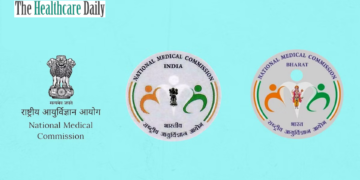Telemedicine is an exciting and rapidly growing medical technology that can help provide care to patients who live in remote areas or who have difficult-to-access conditions. However, telemedicine has its limits as well. In this article, we’ll explore the pros and cons of telemedicine to help you understand the potential benefits and risks of using it in your practice.
What is Telemedicine?
Telemedicine is the use of technology to provide remote medical care to patients. The term “telemedicine” came into common use in the ’90s, as the use of telecommunications to deliver healthcare services became more common. With the wide adoption of smartphones, many healthcare providers now use a combination of smartphone apps, teleconferencing services, and videocast equipment to communicate with patients.
Such mobile applications can help communicate more effectively with patients suffering from a range of diseases and conditions, including diabetes, depression, chronic pain, and injuries. Telemedicine is also used to provide health counselling, such as tobacco cessation programs, or to give prescription medications to patients.
How Telemedicine Works?
Telemedicine uses communication technologies, such as telecommunications and computer networks, to facilitate the transfer of medical information between health providers and their patients. In many cases, the medical information is transmitted using computer software, which is then decoded by the receiving health care provider’s computer software. Communication between the health provider and patient can take place over a variety of platforms.

Voice-over-Internet Protocol (VoIP) allows for phone calls to be made through computer networks, either as voice calls or as video calls. Similarly, video conferencing services allow for the transmission of computer-generated images between two locations, which can be useful when communicating with patients who are visually impaired.
Telemedicine for Specialty Care and Prescribed Reading
Telemedicine can also be useful for specialists who need to consult with a healthcare provider in a remote location. For example, if a patient has an appointment with a specialist who has a clinic in a rural location, but the patient lives in a large city, telemedicine might be used to coordinate the appointment.
Telemedicine can also be useful for other types of consultations that require consulting with a specialist in a remote location, such as when a family member needs medical advice. Telemedicine can also be used to provide prescriptions. This can be useful for patients who live in remote areas and for whom the nearest pharmacy may be inconvenient or even inaccessible.
A remote pharmacist can help patients with refilling prescriptions, picking up new medications, and ordering speciality medications. In some cases, prescription medications can be transmitted electronically to patients over the internet, eliminating the need for patients to receive medication in person.
Limitations of Telemedicine
While telemedicine can be a valuable tool for managing some medical conditions, it cannot substitute for in-person care. Telemedicine is best used in situations where it can provide an added benefit, such as allowing patients to consult with a specialist in a remote location, rather than replacing an in-person visit.
Telemedicine can also be limited by the quality of the internet connection between the health provider and the patient. A weak or intermittent internet connection can make remote consultations difficult, and it’s important to test the internet connection before conducting a consultation.
Pros of Using Telemedicine in Your Practice
Telemedicine, the practice of providing medical care remotely through technology, offers numerous advantages that have revolutionised the healthcare landscape. One of its primary benefits is improved accessibility. Telemedicine breaks down geographical barriers, enabling patients, particularly those in remote or underserved areas, to access medical expertise without the need for extensive travel. This accessibility also extends to individuals with limited mobility, who may find it challenging to visit a healthcare facility.
Another key advantage is convenience. Patients can consult with healthcare professionals from the comfort of their homes, eliminating the need to commute, wait in crowded waiting rooms, or take time off work. This not only saves time but also reduces the stress associated with in-person visits.

Telemedicine is also known for its cost-effectiveness. Both patients and healthcare providers can reduce expenses related to travel and administrative overhead. Moreover, it can lead to early disease detection and prevention, potentially lowering healthcare costs in the long run.
Furthermore, telemedicine has proven to be an effective tool in managing chronic conditions. Continuous remote monitoring allows healthcare professionals to track patients’ health status and intervene promptly if needed, improving disease management and quality of life.
In the realm of mental health, telemedicine has reduced the stigma associated with seeking help, as individuals can receive confidential therapy or counselling from their own homes. Overall, telemedicine enhances healthcare accessibility, convenience, cost-efficiency, and quality of care, making it a transformative force in modern healthcare delivery.
Cons of Telemedicine
While telemedicine has revolutionized healthcare in many ways, it is not without its drawbacks. One of the primary concerns is the potential for misdiagnosis or incomplete evaluations. Remote consultations may lack the hands-on physical examinations and diagnostic tests that are essential for accurate diagnosis, particularly for complex medical conditions. A misjudgment could lead to delayed or incorrect treatments, posing risks to patient health.
Privacy and security issues also rank among the cons of telemedicine. The digital nature of these consultations introduces vulnerabilities in data protection, potentially exposing sensitive medical information to breaches or unauthorized access. Ensuring robust cybersecurity measures is imperative to safeguard patient confidentiality and comply with data protection regulations.
Not everyone has equal access to telemedicine. Socioeconomic disparities and disparities in digital literacy can limit the reach of telehealth services. Individuals without reliable internet access, appropriate devices, or the technological know-how may be left behind, exacerbating healthcare inequalities.
Another concern is the potential erosion of the doctor-patient relationship. Telemedicine can sometimes feel impersonal, lacking the in-person connection and empathy that can be crucial for patient trust and compliance.
Finally, licensing and insurance issues may complicate the practice of telemedicine, as healthcare providers must navigate varying regulations across regions and ensure that their services are covered by insurance plans.
Addressing these cons of telemedicine is essential to harness the technology’s potential while ensuring that patient safety, privacy, and accessibility are not compromised.
Conclusion
Telemedicine is a promising technology that provides an innovative way for patients to access health care. However, it also comes with some risks if you are not careful. One challenge is that many patients are hesitant to use it because they don’t want their health information transmitted to a third party. This can be overcome by offering remote consultations through your practice’s website. This can help improve access to care while providing convenience for your patients.























